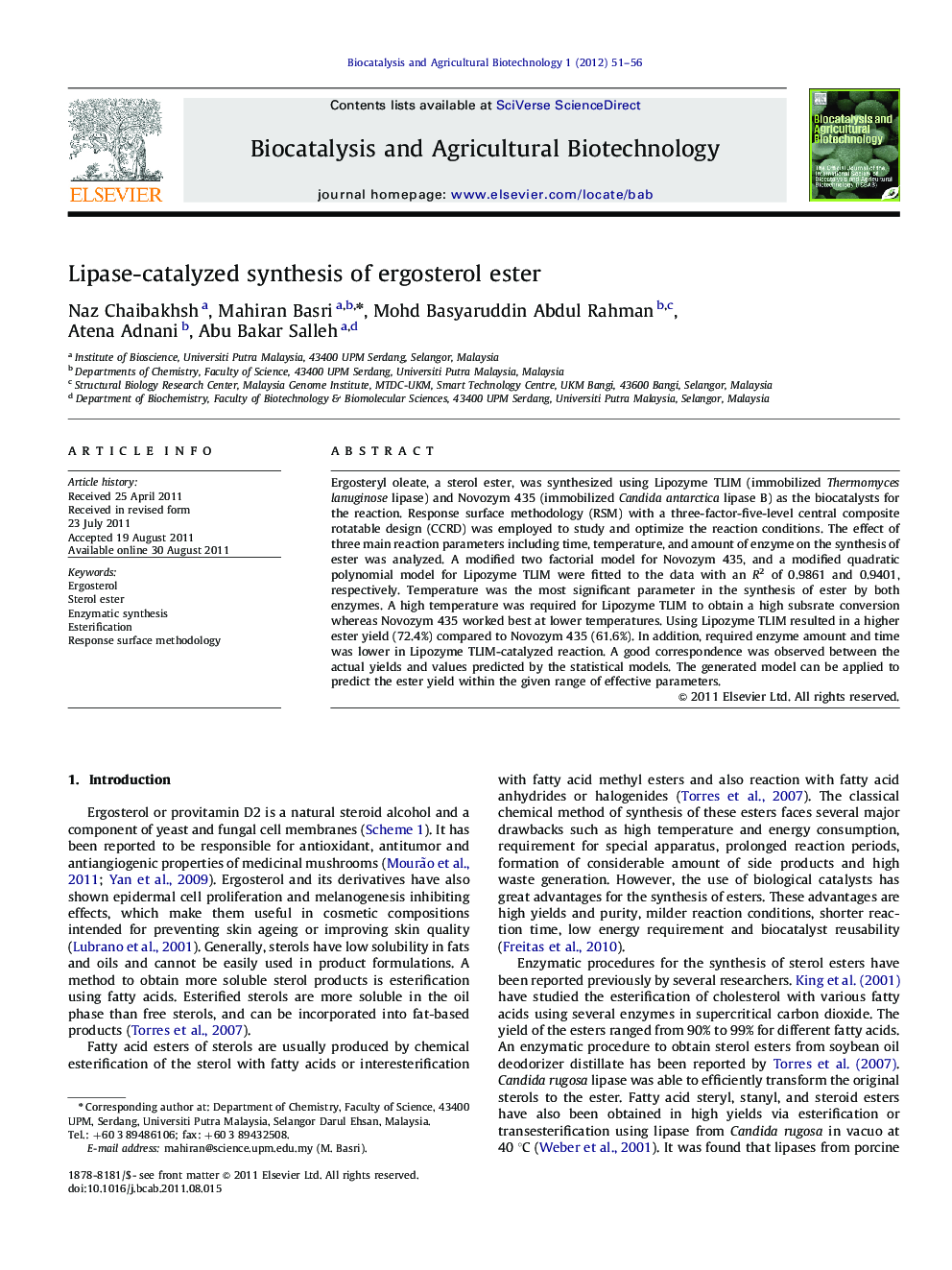| Article ID | Journal | Published Year | Pages | File Type |
|---|---|---|---|---|
| 2075576 | Biocatalysis and Agricultural Biotechnology | 2012 | 6 Pages |
Abstract
Ergosteryl oleate, a sterol ester, was synthesized using Lipozyme TLIM (immobilized Thermomyces lanuginose lipase) and Novozym 435 (immobilized Candida antarctica lipase B) as the biocatalysts for the reaction. Response surface methodology (RSM) with a three-factor-five-level central composite rotatable design (CCRD) was employed to study and optimize the reaction conditions. The effect of three main reaction parameters including time, temperature, and amount of enzyme on the synthesis of ester was analyzed. A modified two factorial model for Novozym 435, and a modified quadratic polynomial model for Lipozyme TLIM were fitted to the data with an R2 of 0.9861 and 0.9401, respectively. Temperature was the most significant parameter in the synthesis of ester by both enzymes. A high temperature was required for Lipozyme TLIM to obtain a high subsrate conversion whereas Novozym 435 worked best at lower temperatures. Using Lipozyme TLIM resulted in a higher ester yield (72.4%) compared to Novozym 435 (61.6%). In addition, required enzyme amount and time was lower in Lipozyme TLIM-catalyzed reaction. A good correspondence was observed between the actual yields and values predicted by the statistical models. The generated model can be applied to predict the ester yield within the given range of effective parameters.
Related Topics
Life Sciences
Agricultural and Biological Sciences
Agricultural and Biological Sciences (General)
Authors
Naz Chaibakhsh, Mahiran Basri, Mohd Basyaruddin Abdul Rahman, Atena Adnani, Abu Bakar Salleh,
